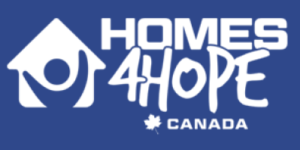Solola, Guatemala
In 2020, Homes4Hope embarked on a journey expand our efforts into Latin America, more specifically Sololá, Guatemala. Latin America is often shadowed by other countries however, the need is significant. 60% of Guatemalans live below the poverty line with 40% of that, in extreme poverty. Guatemala has the highest child mortality rate in Central America.
Our goal to bring the same focus and attention to families in need through providing necessary quality of life services including health assistance and safe living conditions. We do this in our continued partnership here in Canada with our two peers as well include Habitat Guatemala and ADISA on the ground in Sololá, Guatemala.
Sololá is located in the south of Guatemala region approximately 125km east of the capital, Guatemala City. It is located close to Lake Atitlan, which is heralded as one of the most mystical and memorable lakes on the planet. It is also the deepest lake in Central America.
The urban centre has about 14,000 people, but the municipality also includes four village communities — Los Encuentros, El Tablón, San Jorge la Laguna, and Argueta — as well as 59 smaller rural communities.

So why Guatemala?
In Guatemala, children and adults with disabilities are among the most invisible to society in all fields, levels and processes of social development. Neither governments, as entities legally responsible for protecting the rights of people with disabilities, nor society, as a body morally responsible for protecting the rights of people with disabilities, protect the rights or promote the inclusion and participation of this group. The laws, programs, and projects that are implemented in health, education, sports and infrastructure tend to ignore the needs of people with disabilities and consistently fail to ensure accessibility.
The majority of families of people with disabilities are living in poverty and extreme poverty, earning an average income of $30.00 to $60.00 per month. Disability tends to further aggravate their economic situation and prevents them from breaking the cycle of poverty.
In this context, families do not have a safe or sanitary home, lacking basic amenities like water, electricity, bathroom, kitchen, etc., unable to provide a comfortable and hygienic space for their children with disabilities. The majority share a home with their extended family (siblings, parents, grandparents, uncles), which limits their ability to ensure a safe and decent home for their children with disabilities.
The education system is not designed for diversity. Teacher training has not included methodologies, techniques, or strategies to address children’s diverse needs, especially those of children with disabilities. Government and society have instead implemented segregation measures, creating “special” education schools for children with disabilities, cementing barriers for their inclusion and participation in society, and reinforcing


